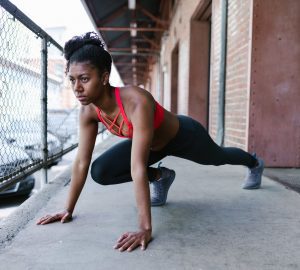Goals are important if you want to become physically fit. They hold you accountable, motivate and push you to exercise consistently. But creating achievable goals can be challenging.
You might be ambitious and set fitness
objectives that are too difficult to achieve. Or you could be unmotivated and
set targets that will never lead to physical fitness. In 2020, here’s how to
create fitness goals judiciously and work on them correctly.
Set One Goal at a Time
Far too many people try to achieve multiple fitness goals at the same time. Someone might want to cut their sugar intake abruptly, exercise four hours each day and sleep eight hours at night. That’s a recipe for failure.
When you are getting started on your fitness journey, focus on one goal at a time. For example, you could set an aim to reduce your meal proportions by a third. It’s something achievable. But when you couple it with running five kilometres each day, it might become too much to handle.
A better idea is to make small changes gradually. If you choose to reduce your sugar intake, do it over some time. If you decide to jog each morning, start by running a couple of blogs before you settle for a 5K challenge.
Own your Goals
Ever scrolled through Instagram feeds and got wowed by how fit people actually are? It happens to everyone. But it’s not something you should use to set your physical fitness goals.
For starters, people have different measures on what fitness is all about. Some people want to be able to run a full marathon before they can consider themselves fit. Others want to lose as much weight as possible.
Truth be told, none of these goals are impossible to achieve. But they don’t have to be your objectives. If you are excited about losing your belly fat, focus on that goal. Forget about also wanting to have huge biceps for now and concentrate on burning fat.
Set ‘SMART’ Goals
SMART, as you probably know, refers to Specific, Measurable, Achievable, Realistic and Timely. We’ve already mentioned the need to have specific, attainable and realistic fitness goals. However, also ensure your objectives are measurable.
Completing a 5K marathon is a measurable goal. Doing 100 sit-ups, riding your bike for 15 miles or jumping rope 2000 times are also measurable. More importantly, they are objectives through which you can evaluate your progress.
On the other end, you also want time-bound goals. You don’t want to take forever trying to finish a 5K marathon. Set to do it in 45 minutes on your first attempt. If you work hard and finish the marathon even by 50 minutes, you’ll feel energized instead of disappointed.
That’s the power of having smart goals. It’s similar to the near-miss effect in gambling. Ideally, your brain interprets near-misses as wins. It also encourages you to keep pushing yourself to achieve your goals, which is the entire purpose of exercising.
Beware of Hurdles
Hurdles are unavoidable. Think of how many times you’ve come up with excuses for grabbing a snack after exercising. You’ve probably skipped the gym several times because of entirely petty reasons.
But because you also want to achieve your fitness targets, acknowledge your hurdles and know how to deal with them. Ask these questions:
- What are your main obstacles in achieving your fitness goals?
- What weaknesses prevent you from exercising fully?
- How can you improve?
Knowing how to address your hurdles and weaknesses is the only way you can achieve your fitness objectives. Maybe having too little time to exercise is your main challenge. Find a routine that could help you burn fat in less time.
If you have a weakness feeling the urge to eat after an exercise session, find snacks that are good for your health. That way, you’ll have fewer excuses and hurdles in your life.
Be Willing to Sacrifice
Most people who fail in attaining their fitness aims have this problem. They want to lose weight but don’t want to reduce their meal proportions. Someone else might want to gain abs but don’t want to run on the mill.
When setting your fitness goals, make significant sacrifices. They don’t have to be huge sacrifices. You could opt to wake up one hour earlier for your home yoga session. Alternatively, you could choose to give up fried foods or reduce the amount you take.
Essentially, make sacrifices geared toward helping you achieve your fitness objectives. Things like what foods you take, proportions, setting gym time and giving up beer are what matters in the world of attaining physical fitness.
Focus on the Long Term
Everyone wants to achieve their goals fast. But in the game of physical fitness, you want to focus on the long-term. Forget about checking your weight every two days. Ignore the urge to admire your abs after every session.
Create goals with the future in mind. That’s why you want to focus on one target at a time. That way, you can achieve your objective or reducing your calorie intake first. Then you can take on losing weight before you settle for a half marathon.
Be Flexible with Goals
Having smart goals is essential but be flexible enough to alter them with time. Of course, you don’t want to flexibility as an excuse for lowering your objectives. However, it’s crucial so that you can follow a fitness path you are comfortable with.
To illustrate, let’s say you set to ride your bike 20 miles each day. But after a week, you realize it’s too exhausting and consumes more time than you are willing to sacrifice. You can alter that target downward without feeling guilty.
On the other end, you could have objectives you thought were difficult but now believe are too low. Let’s say you thought you could only handle 20 press-ups, but you can now do 50 at a time. You should be able to change your goals as you wish.








